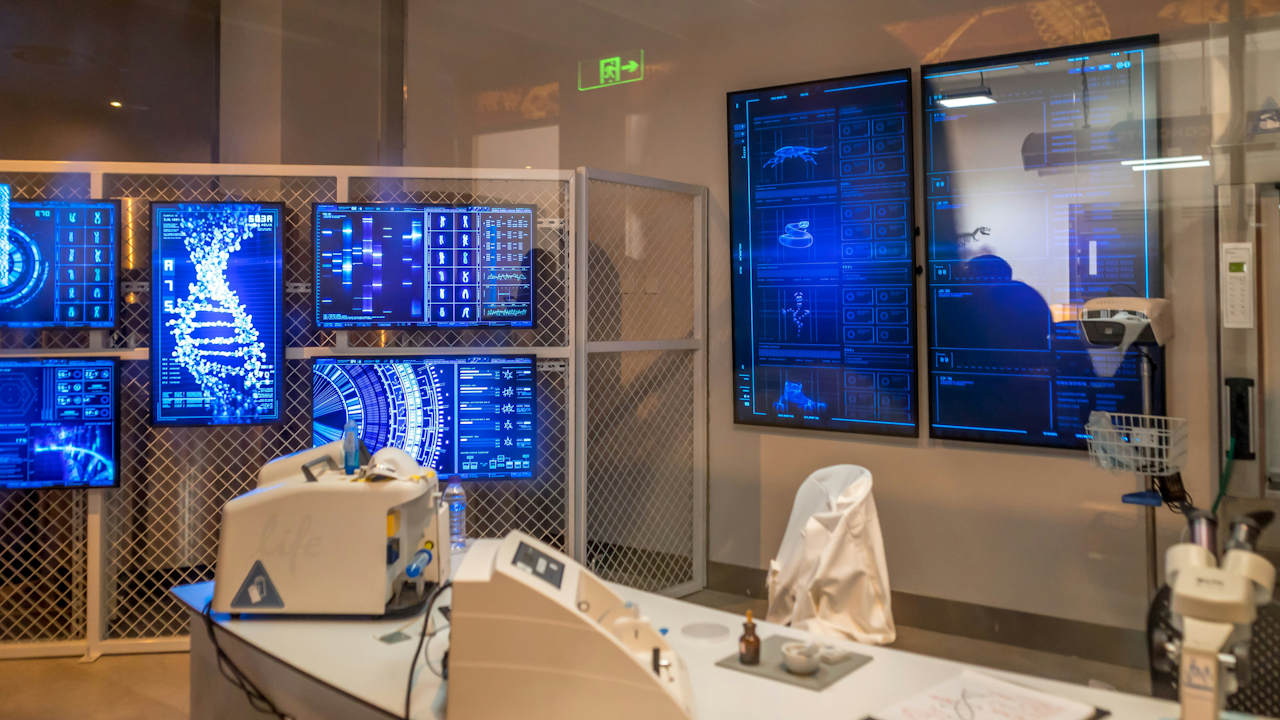Biohacking is a fascinating and often controversial field where individuals use science and technology to optimize their own biology. While some biohackers focus on nutrition, fitness, or sleep, a more advanced and daring subset delves into the world of genetics. This “DIY” or at-home genetic experimentation, also known as garage biology, has a growing community of enthusiasts. These biohackers use accessible tools and techniques to perform experiments once confined to professional laboratories. This article explores the world of DIY biohacking, its methods, motivations, and the critical ethical and safety considerations involved.
What is DIY Biohacking?
DIY biohacking is a movement where non-professionals conduct biological and genetic experiments in non-traditional settings, such as home labs, shared community spaces, or “biohacker spaces.” These individuals, often called biohackers, are driven by curiosity, a desire for knowledge, and a spirit of innovation. They aim to democratize science, making it accessible to anyone with an interest, regardless of their academic or professional background. This movement challenges the traditional, centralized model of scientific research, pushing the boundaries of what’s possible outside of institutional labs.
Common At-Home Genetic Experiments
The range of at-home genetic experiments is diverse and constantly evolving. Here are some of the most common types:
DNA Extraction
One of the most fundamental experiments is extracting DNA from everyday sources. A popular example is extracting DNA from a strawberry using household items like soap, salt, and rubbing alcohol. This experiment demonstrates the basic principles of DNA isolation and visualization. Biohackers also extract their own DNA from saliva or cheek cells. This simple procedure is a gateway to more complex genetic experiments.
CRISPR Gene Editing
Perhaps the most talked-about area of DIY biohacking is the use of CRISPR-Cas9 technology. CRISPR is a revolutionary tool that allows for precise editing of genes. At-home biohackers have used this technology for various projects, such as:
- Making glow-in-the-dark organisms: By inserting a gene from a jellyfish (which produces a fluorescent protein) into bacteria or yeast, biohackers can create organisms that glow under ultraviolet light. This experiment is a staple in the DIY biohacking community and serves as a proof of concept for gene insertion.
- Creating antibiotic-resistant bacteria: In a more advanced and ethically dubious experiment, some biohackers have used CRISPR to make bacteria resistant to certain antibiotics. This experiment is often performed to understand the mechanisms of antibiotic resistance, but it highlights the potential dangers of at-home genetic manipulation.
Polymerase Chain Reaction (PCR)
PCR is a technique used to amplify a specific segment of DNA, creating millions of copies. DIY biohackers use homemade or commercially available thermal cyclers (the machine that performs PCR) to perform experiments such as:
- Identifying genes: PCR can be used to amplify a specific gene of interest from a DNA sample. This could be a gene related to a particular trait or a gene from a microorganism.
- DNA fingerprinting: While not as precise as forensic-grade methods, at-home PCR can be used to create simple DNA fingerprints to demonstrate genetic variation between individuals.
Tools of the Trade
The DIY biohacker’s lab is a blend of specialized equipment and repurposed household items. Essential tools include:
- Laminar flow hoods: Used to create a sterile environment for working with bacteria and other microorganisms.
- Incubators: To maintain a constant temperature for growing bacterial cultures.
- Centrifuges: Used to separate components of a liquid by spinning it at high speeds.
- PCR machines: Commercially available or self-made machines that cycle through different temperatures to perform PCR.
- Electrophoresis rigs: Used to separate DNA fragments by size.
- Reagents and kits: Biohackers often purchase kits from online suppliers that provide the necessary enzymes, primers, and other chemicals for experiments like CRISPR gene editing or DNA extraction.
The Ethics and Safety of At-Home Biohacking
The rise of DIY biohacking has sparked a heated debate about the ethics and safety of conducting genetic experiments outside of regulated labs.
Safety Risks
- Accidental release of modified organisms: A primary concern is the accidental release of genetically modified organisms (GMOs) into the environment. While most DIY experiments use harmless organisms like E. coli K-12, a non-pathogenic strain, the potential for a new, harmful GMO to escape and cause unforeseen ecological damage is a real fear.
- Infection: Handling bacteria and other microorganisms without proper sterile techniques can lead to infections. Biohackers often lack the institutional oversight and training that professional scientists receive.
- Lack of expertise: Many biohackers are self-taught. Without formal training, they may not fully understand the risks associated with their experiments or the proper safety protocols.
Ethical Considerations
- Dual-use dilemma: The same tools and techniques used for benign experiments, like making glowing bacteria, could be used to create harmful biological agents. The democratization of these technologies raises concerns about potential misuse by malicious actors.
- Human germline editing: While most DIY experiments focus on non-human organisms, the potential for at-home human germline editing (modifying the DNA of embryos) is a terrifying prospect for many. Such experiments raise profound questions about human evolution, consent, and the very definition of what it means to be human.
- Informed consent and privacy: As more individuals experiment with their own genetics, questions arise about the ethical implications of sharing personal genetic data, especially without a clear understanding of the long-term consequences.
The Future of DIY Biohacking
Despite the controversies, the DIY biohacking movement continues to grow. Its proponents argue that it fosters scientific literacy, encourages innovation, and empowers individuals to take control of their own health and biology. They believe that by making science more accessible, they are creating a more informed and engaged public. The future of DIY biohacking will likely involve a continuous balancing act between innovation and regulation, with community-led safety initiatives and open discussions playing a crucial role in shaping its trajectory.

